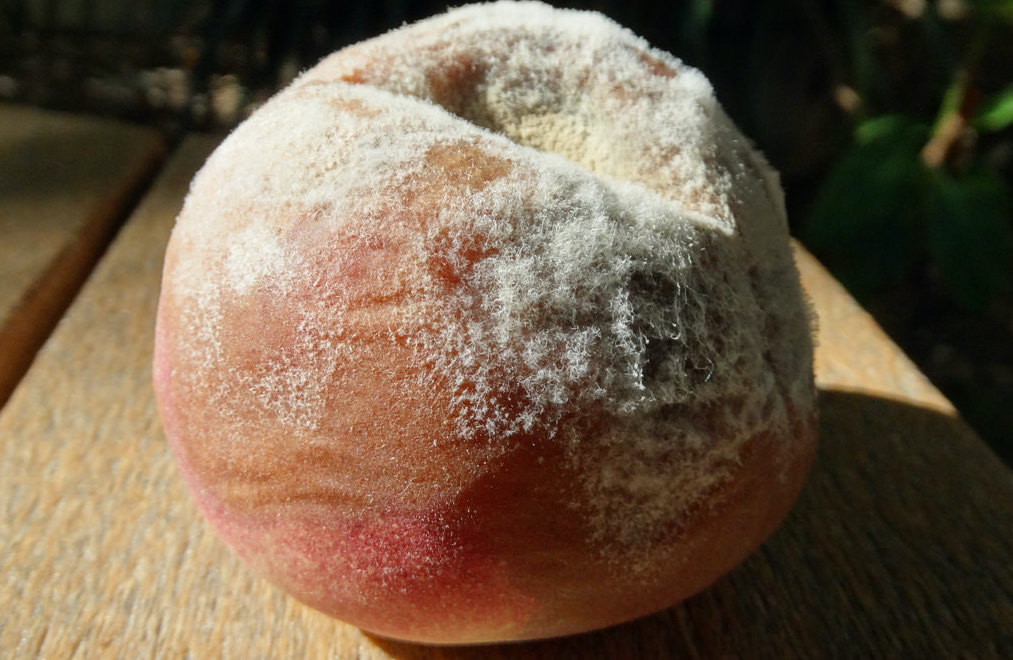Managing brown rot of peaches, other stone fruit in garden

JACKSONVILLE, Ill. — Ever gone out to pick a peach, only to find it has a large brown, mushy spot? The likely culprit is brown rot.
Brown rot (Monilinia spp.) is one of the most common diseases that affects peaches and other stone fruits like nectarines, plums, cherries and apricots. While fruit infections may be the most noticeable problem, this fungus will also infect flower blossoms and shoots.
What does brown rot infection look like?
In the spring, flowers and shoots of stone fruits may become infected, particularly during warm, moist conditions. Infected flowers will wither, turn brown, and remain on the tree for an extended period. Eventually, the infection may travel into the shoots of the trees.
Infected shoots will develop sunken brown cankers that may ooze gum. Both flower and shoot infections can serve as a source of inoculum (the ‘stuff’ that causes infections) for fruit infections and for the following year.
While it is possible for green fruits to become infected, as they mature, they become more susceptible to brown rot infection. Brown rot begins as small, circular spots that will enlarge and grow together. During warm, wet weather, fruits may completely rot within two to three days. Infected areas will produce tan to gray spore masse, giving the fruit a fuzzy appearance.
Diseased fruits will turn brown to black and become shriveled. Some fruit will drop to the ground, while others will remain attached to the tree. These fruits, called mummies, are a major source of inoculum come spring.
Managing brown rot
Good sanitation is probably the most important thing that can be done to manage brown rot. Pick up all dropped and rotted fruit promptly and destroy or discard them. Additionally, make sure to remove mummies from trees. During the dormant season, prune out any infected twigs and branches. Doing this will help reduce the amount of inoculum for the following season.
Pruning trees can help reduce the amount of brown rot that develops as well. Opening up the canopy will help increase airflow through the canopy, allowing it to dry out faster. Thinning fruits so they won’t touch when they are mature is also helpful.
Fungicides can also be used to manage brown rot. It’s important to note that fungicides will not cure brown rot. Rather, they protect plant material from becoming infected. If you start spraying once you see brown rot, you likely won’t get good control.
Begin spraying trees when flower buds begin to turn pink and continue through the growing season. Select products that contain captan, myclobutanil, or propiconazole as their active ingredients. Make sure the product you choose is labeled for use on the type of tree you will be spraying, and make sure to read and follow all label directions.
Good Growing tip of the week: Be careful when harvesting fruit and store in a cool location. Injured and damaged fruit is more likely to develop brown rot during storage.
Miss Clipping Out Stories to Save for Later?
Click the Purchase Story button below to order a print of this story. We will print it for you on matte photo paper to keep forever.

